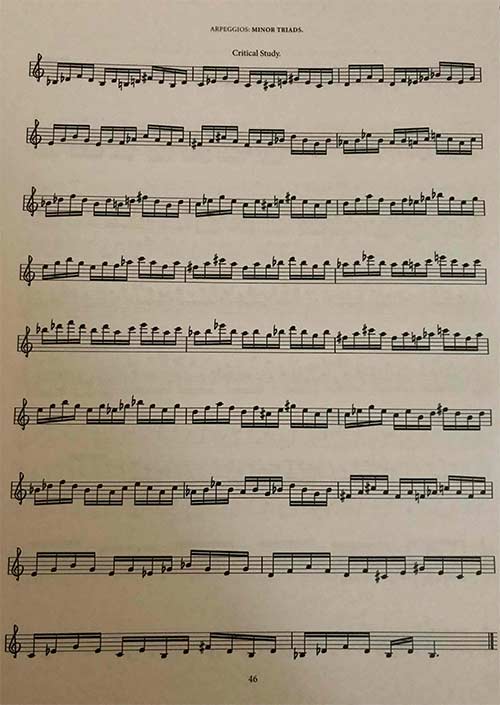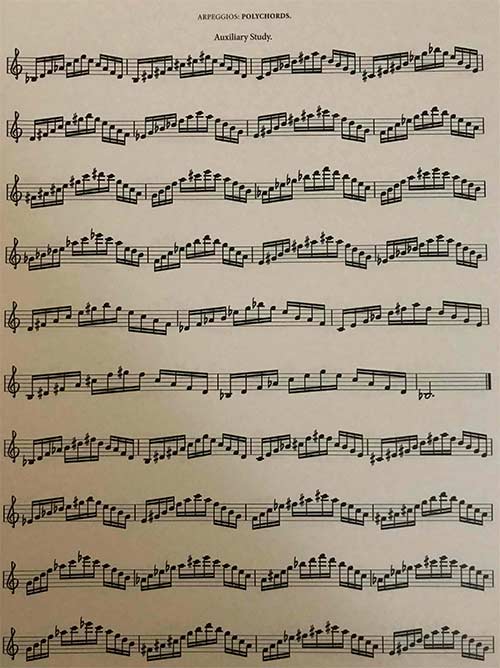“Art of Saxophone” Aims to Transform Musicians by Covering All Aspects of Mastery

Introduction
In the past, if you want to learn how to play the saxophone, you would learn by listening to records, transcribing solos, and going to see your favorite musicians play live. Today, there are far more resources available for the beginning as well as advanced saxophonist to better hone their ability. Although there are far more educational resources available today than there have been in the past, many saxophone educators still believe that the traditional method of learning to play the saxophone (or any instrument) is the most effective way. Although I would ultimately agree, I do believe that some of these saxophone materials can be a great resource for the developing player (me!). Today, I will be briefly discussing a book by saxophonist Dann Zinn and providing 2 exercises from the first edition and the sixth edition so you have a better idea what these books have to offer. If you have not heard of Dann Zinn, please review his bio below.
Bio
As a world-class saxophonist/flutist, Dann Zinn is renowned for being a passionate soloist and composer/arranger. Dann entered the Bay Area music scene as a teenager and after studying and working in L.A. and Aspen, found himself in New York. In his early years, he was mentored by Lenny Pickett, Eddie Daniels, and Ernie Watts. Zinn spent time gigging and touring New England only to return to California where he has become a sought after sax player. Zinn’s resume includes working with Joe Henderson, Taylor Eigsti, Russ Ferrante, Jeff Tain Watts, Freddie Hubbard, Chuck Findley, Mary Wells, Martha and the Vandellas, Barry Finnerty, Frank Martin and many more. In addition to his four CD’s: Ten Songs, Wish, Grace’s Song, and the newest, Shangri La, his impressive discography includes over 100 appearances as a featured soloist and sideman on albums with prominent musicians.When Dann is not recording and gigging, he can be found teaching musicians throughout the country. Dann is the Director of Jazz Studies at the California State University East Bay and currently holds the following positions: Director of Jazz Bands at Chabot College, Director of the San Francisco Jazz Festival High School All Star Combo, faculty of the University of California at Berkeley, faculty at The California Jazz Conservatory, and taught at the Brubeck Institute. In addition, Zinn’s private studio is home to a list musicians who have grown to become fantastic players such as Dayna Stephens, Chad Lefkowitz-Brown, Lucas Pino and Ben Flocks just to name a few.
The Zinn and the Art of Saxophone (what I’ll be discussing today), is a series of six books instructing students and professionals on how to expand their playing abilities and concepts.
Book Overview
THESE SIX BOOKS INCLUDE:
- A detailed philosophical approach for guidance, clarity, and encouragement.
- Numerous and varied long tone exercises, tone etudes covering all registers, articulation, overtones, extended tonal techniques such as sub-tone, scooping and bending, singing while playing, playing with the different vowel sounds, and vibrato.
- Countless ways to play scales and related exercises.
- Exotic and unusual scales and arpeggios.
- Hundreds of studies of altissimo, large intervals, palm keys, finger twisters, alternative fingerings, trills, and extended techniques.
Practicing This Material:
- Play Slowly
- Segment the material into small bits
- Use a metronome
- Keep a log and use a timer (Brecker did it)
- Always focus on Tone, Evenness, and Accuracy
- Record Yourself
- Relaxation (This is not a race)
Example #1: Zinn and The Art of Saxophone White Book (1st book)

Overview
This is one exercise from Dann’s first book in the six book series. This an exercise showcasing minor triads and one way to approach practicing them.
Example #2: Zinn and The Art of Saxophone Black Book (6th book)

Click here to download the exercises in a more readable, printer-friendly PDF format
Overview
This is one exercise from Dann’s six or final book in the six book series. This an exercise showcasing Polychords and one way to approach practicing them.
Final Thoughts
With more and more saxophone materials, e-books, podcasts, videos, etc. It can be a bit overwhelming to figure out which educational materials will help YOU progress as a saxophonist. There are quite a few saxophonists who do not study from books but instead learn how to play (sound, technique, rhythm, etc.) through listening and transcribing solos across various genre’s of music. I personally believe the traditional method has been the most effective for learning and improving my technique, but I have also benefited by leveraging various saxophone educational materials. When it comes to Zinn and The Art of Saxophone, I believe this series can improve the technique for the beginner to advanced saxophonist if approached properly (see Practicing This Material Above). Some of the material I have practiced from book 1-6 has helped me personally when approaching how to play various intervalic shapes. In addition, various exercises in book 6 (Most Advanced) are quite challenging and fun to practice but for me personally, I do not know when I would leverage these exercises outside the practice room (specifically some of the altissimo exercises). I would like to thank Dann Zinn for sending me his Zinn and the Art of Saxophone series of books and intend to leverage various exercises while working on my technique.
If you currently own Zinn and the Art of Saxophone series, please let me know your thoughts and what is your favorite exercise to work on.






July 6, 2024 @ 5:51 pm
I purchased the 6 books in the series and there is a lifetime of content. I agree with you that they aren’t a substitute to the classic way of learning sound, technique etc. through transcribing solos and such. However, they provide a good challenge. Ultimately it’s about getting away from the page as soon as possible. I am definitely not the first to say that. 😉